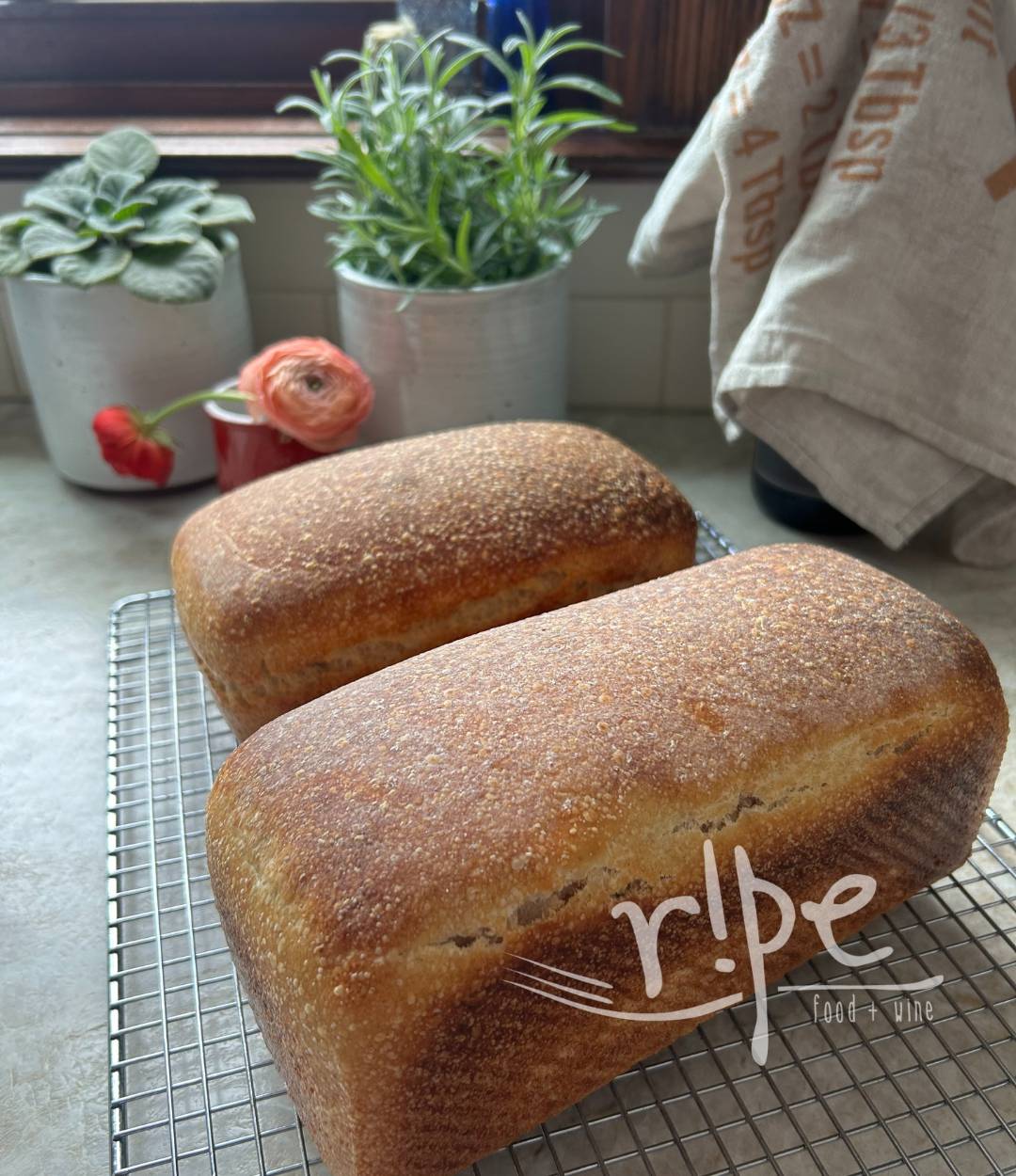This is a version of my Sourdough Pullman Loaf that uses less starter and produces a denser, more compact loaf. I love it for toast in the morning. After a couple days, cut what’s left of the loaf and keep the slices in the freezer.
Compact Sourdough Loaf
makes 1 Pullman loaf 9x4-inches; recipe can be doubled for two loaves
Ingredients
- 475 grams all purpose flour Wheat Montana blue bag, 11% protein
- 50 grams whole wheat flour Conservation Grains, Wheatsome or Snowgoose
- 4 grams barley malt powder (optional, don't let this ingredient stop your baking, but it does help with crust color) Anthony's diastatic works well
- 325 grams water
- 50 grams 100% hydrated starter mine is 50/50 rye and wheat; fed fairly recently and refrigerated is fine to use
- 25 grams water
- 11 grams Kosher or sea salt
Instructions
Autolyse, 1 hour
-
Mix together the flours, barley malt, and water, cover bowl and let sit for 1 hour.
Mix
-
To the autolysed dough, add the starter, additional 25 grams water, and salt. Mix with a dough hook on a stand mixer for 10 minutes.
At first it will look "too wet" but trust the process. As the dough hook works (turn the speed to medium-high, but watch that the mixer doesn't walk off the counter!) a giggly dough will form and it will continue to strengthen and take more shape through bulk fermentation. Transfer dough to a large ceramic or glass bowl, cover and set in a warm place.
Bulk Fermentation, 3—5 hours
-
Allow about 3 hours for bulk fermentation, but a little more time isn't going to hurt things, so go ahead and do your thing, the bread will be fine. Try to give it at least 3 "stretch and folds" in the bowl at 30 minute intervals at 30/60/90 minutes. You're building the gluten with the "stretch and folds" so you'll get better results if you do it, but if your schedule doesn't allow perfect compliance, it's ok, don't worry about it, just do the best you can. (For my "stretch and folds" sometimes I take the dough out of the bowl and work on the counter, more of the "slap and fold" technique and other times I use a curved edge bowl scraper and work in the bowl (faster that way), scooping the dough from bottom of bowl to top around the clock positions, noon, 3, 6, and 9.
Shape, Proof or Retard Overnight, and Bake
-
Spray or lightly grease a 9x4-inch pullman loaf pan. Scoop dough from the bowl onto counter, stretch into a rectangle, and shape with a bench scraper and your hands. Transfer to prepared pan and cover with a piece of greased plastic wrap.
Dough is slack, so do your best with shaping—it'll be fine. I fold down the top third then tuck and roll the rest of the way, building layers and tightness in the outer crust without overly degassing the dough.
-
At this point you can retard overnight in the refrigerator (for extra sour flavor) and proof the next day, or just go ahead and let it rise in a warm place to the top of the pan. (For me, this usually takes 3–4 hours, longer if you are bringing it back to life after time in the refrigerator.)
-
Preheat oven to 475°F with rack set one level below middle, to give the top of the loaf some breathing room. Bake for 20 minutes then lower heat to 425° and continue to bake an additional 20–22 minutes. Remove from oven and let cool for 10 minutes before transferring loaf from the pan to a cooling rack.
Keep bread loosely covered, ideally in a cloth bread bag or brown paper sack to preserve the crust. Enjoy for days and days then make croutons with whatever might be left.



